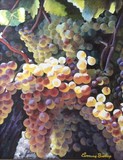01 September, 2006
- John Houle
- 1,404 Views
- 46 Comments
BEAR ..... with me.

Well folks I'm about to take you on a little trip down the road of sculpting.
Is everyone ready ?
Well first off I want to thank Gary Glass ... Tallented Wildlife Photographer and part time comedian.
One of his photographs of a Young Coastal Brown Bear at the Brooks Fall area of Katmai National Park in Alaska that was just about to capture a fish in it's mouth was what inspired me to create a sculpture of the scene.
Thanks Gary.
So with that taken care of ... let's get to business.
First thing that got the ball rolling was to make a few concept sketches of what I was looking to create. Unfortunately my sketches aren't with me while I'm starting this ... but fortunately I did take a photo of one of my sketches for you to get an idea of how it's sort of suposed to look.

